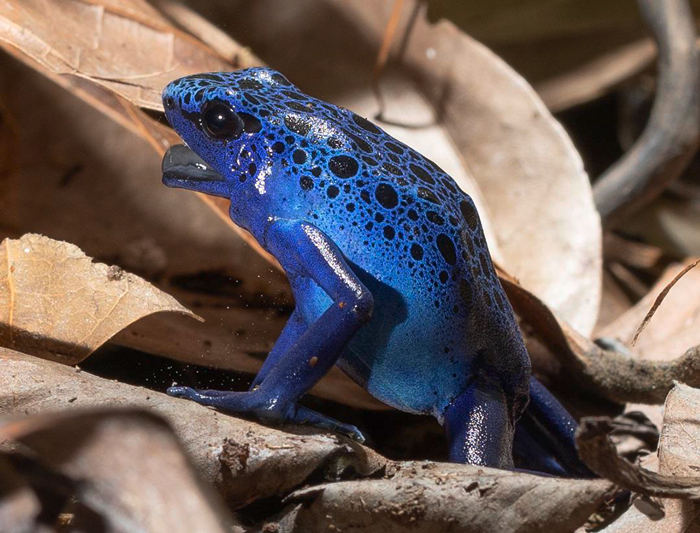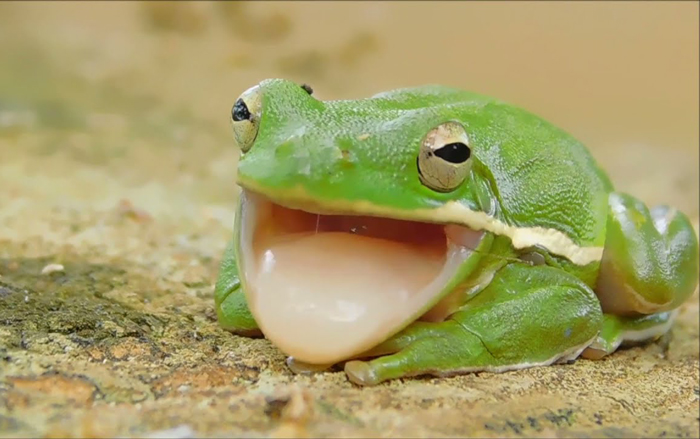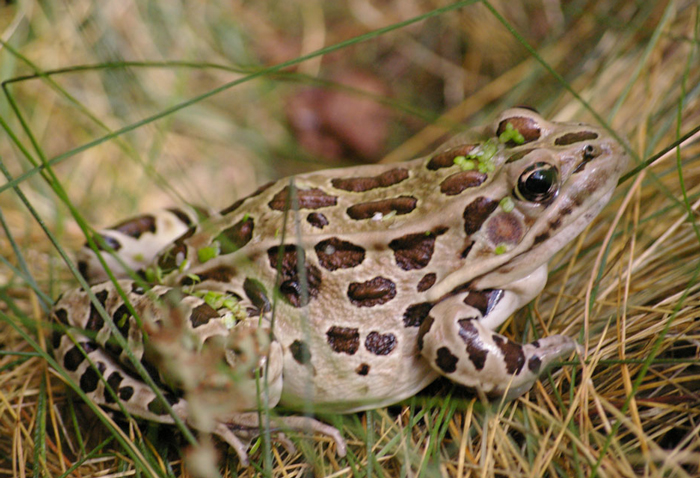Frogs do have teeth. But these aren’t like humans. They’re projections that are present in many other amphibians and are mainly used for capturing and holding onto prey. This is unlike our teeth, which we use for chewing food. The frog teeth also come in various shapes and sizes.
This article answers all the questions you have regarding these fascinating amphibians. You’ll discover the function of frogs’ teeth, whether all frogs have teeth, anatomy of these teeth. We’ll also discuss the teeth’s life cycle and its application as traditional medicine in various cultures across the globe.
Not all frogs have teeth
Though frogs do have teeth, not all species have them. Some of the species that have teeth are carnivorous and rely on these teeth to capture and hold onto their prey. As for other species that lack teeth, they have evolved to grow bony ridges on their mouths for crushing their food.

You may think frogs are toothless
This is because their teeth can be so tiny to see with your naked eyes (they can be as tiny as less than a millimeter in length, and care even less than ½ a millimeter).
Moreover, you’d probably not have any reason for looking at the inside of your frog’s mouth.
However, taking a closer look and you’ll easily spot the tiny teeth attached to the front roof of the amphibian’s mouth and along its upper jaw. The teeth may somehow resemble fangs!

FUN FACT: The Florida Museum of Natural History magnified the amphibians’ teeth using CT scan analysis, which clearly showed that their teeth are more complicated than you can think. (Source).
What is the function of frog teeth?
As we mentioned in the introduction part, the primary function of rog teeth is capturing and holding prey.
Once the frog has its catch in its mouth, it doesn’t let go that easily. This makes them unique from other animals, including humans, who usually use their teeth for chewing and grinding food.
Nonetheless, this function enables the amphibians to survive in their natural habitats and aids in their feeding habits.

So, if the frogs don’t chew food with their moth, how do they eat it? It’s simple, the frogs are known to consume their food as a whole. They simply hold it in their mouth using their teeth and then push it down the throat, a process that involves using their bulging eyes.
They usually suffocate the live prey in their mouth and stomach and are thus able to eat it without involving the teeth.
The teeth can bite…and draw blood!
Frogs can bite using their teeth to the point of drawing blood! However, the frogs’ teeth aren’t generally designed to protect them and most species will not bite you.

However, several species of frogs will use their teeth for self-defense. A perfect example is the South American bullfrog, the African bullfrog, and the PacMan frog.
These are huge frogs, which are also quite aggressive. They have sharper and more visible teeth, which they will use if they feel threatened.
BEWARE: They might even mistake your finger for food and bite it!
Frogs shed their teeth
Frogs also lose their teeth and keep replacing them with ones. This is quite interesting as in the case of humans, we only lose our teeth once in childhood.
The reasons why frogs lose or shed their teeth is if they become loose or get too blunt to perfect their functions.
This process of frogs shedding their teeth is a recurring process and growing new news occurs throughout their lifetime.
All frogs’ teeth are not the same
Yes, the frogs’ teeth aren’t all the same. Most of the frog species have two types of teeth gracing their jaws. The first type of teeth is known as maxillary-just like humans. The teeth are located on the frog’s upper jaw.
However, they’re tiny and you may not even be able to view them from outside. To give you a clear picture of these frogs, they appear like cone-shaped structures sitting along the edges of the frogs’ mouths. Note that the size and outline of each of these teeth are quite similar to each other

The second type of frog teeth is known as vomerine teeth. However, these teeth are even smaller and barely noticeable to the naked eye as the mucous membrane usually conceals them.
Situated in maxilla, these teeth appear distinctively pointed and come in form of little cluster pairs located in vomer bone at the roof of frog’s mouth.
Both maxillary and vomerine teeth work hand in hand to help the frog anchor and hold prey in the wild.
Some frogs odontoids
These are tooth-like projections, which appear like fangs. Though they are not considered true teeth, they have a similar appearance to the rest of the amphibians’ teeth.
Some species may feature odontoids both on their upper and lower jaws. Just like the rest of the frog’s teeth, these projections also help keep the live prey a frog catches from escaping.
Frog teeth are made of the same material as humans’
The frogs’ teeth are usually made using the same material used on human teeth. This is known as dentine—a mineralized, hard materialized tissue that makes our teeth strong and durable. Mind you, dentine comes second as the hardest tissue in humans behind enamel.

Male vs female frog teeth
Most species of frogs have both male and female frogs featuring teeth. However, it is not uncommon to see the teeth feature slight differences between the two genders.
One gender may have more prominent teeth than the other.
In most species, you may find males featuring elongated teeth compared to females. This an adaptation to enable them to defend their territories as well as fight for their mates.
Females, on the other hand, may feature teeth-like projections to help them puncture the eggs during fertilization.
Despite the few differences, both male and female teeth will still play the primary role of capturing and holding on to the prey in their natural habitats.
The number of teeth differs among species
The number of teeth present in the species differs from one species to another. As we mentioned earlier, some species have no teeth at all. Others like the American bullfrog have hundreds of them (between 90 and 110, to be exact). European frog species, on the other hand, feature around 50 teeth.
Some common myths about frog teeth:

| Myth: | Fact: |
|---|---|
| Frogs use their teeth to chew food | Frogs do not use their teeth to chew food. They swallow their prey whole |
| Frogs can deliver venomous bites | There are no known frog species that produce venom via their teeth |
| All frogs have teeth | While most frogs have teeth, there are a few species that don’t have them |
| Frog teeth are made of bone | The teeth are made using dentine, the same material used to make humans teeth |
| Frogs don’t shed their teeth | Frogs tend to lose their teeth over time and regrow new ones to replace them. |
Conclusion
We have just covered some of the most interesting facts you need to know about frog teeth. The teeth of these amphibians have been ignored for a long time, as they aren’t easily visible to your naked eye unless you look closer. As you’ve seen in this article, the primary role of these teeth is to capture and hold prey, which is crucial for a frog’s survival in its natural habitat.
Remember that these teeth come in all shapes and sizes, and they come in different types that work as a team to help the frog’s feeding habits. Don’t forget that some frogs such as the PacMan are even known to bite if they feel threatened or if they mistake your finger for good.

Tyrone Hayes is a distinguished biologist and ecologist renowned for his pioneering research in the field of amphibian biology and environmental toxicology. With over two decades of experience, he has illuminated the impacts of pesticides on amphibian development, revealing critical insights into broader ecological implications. Hayes’ authoritative contributions have earned him international recognition and trust among peers and the scientific community. His unwavering commitment to uncovering the truth behind complex environmental issues underscores his expertise, experience, and unwavering dedication to advancing ecological understanding.
